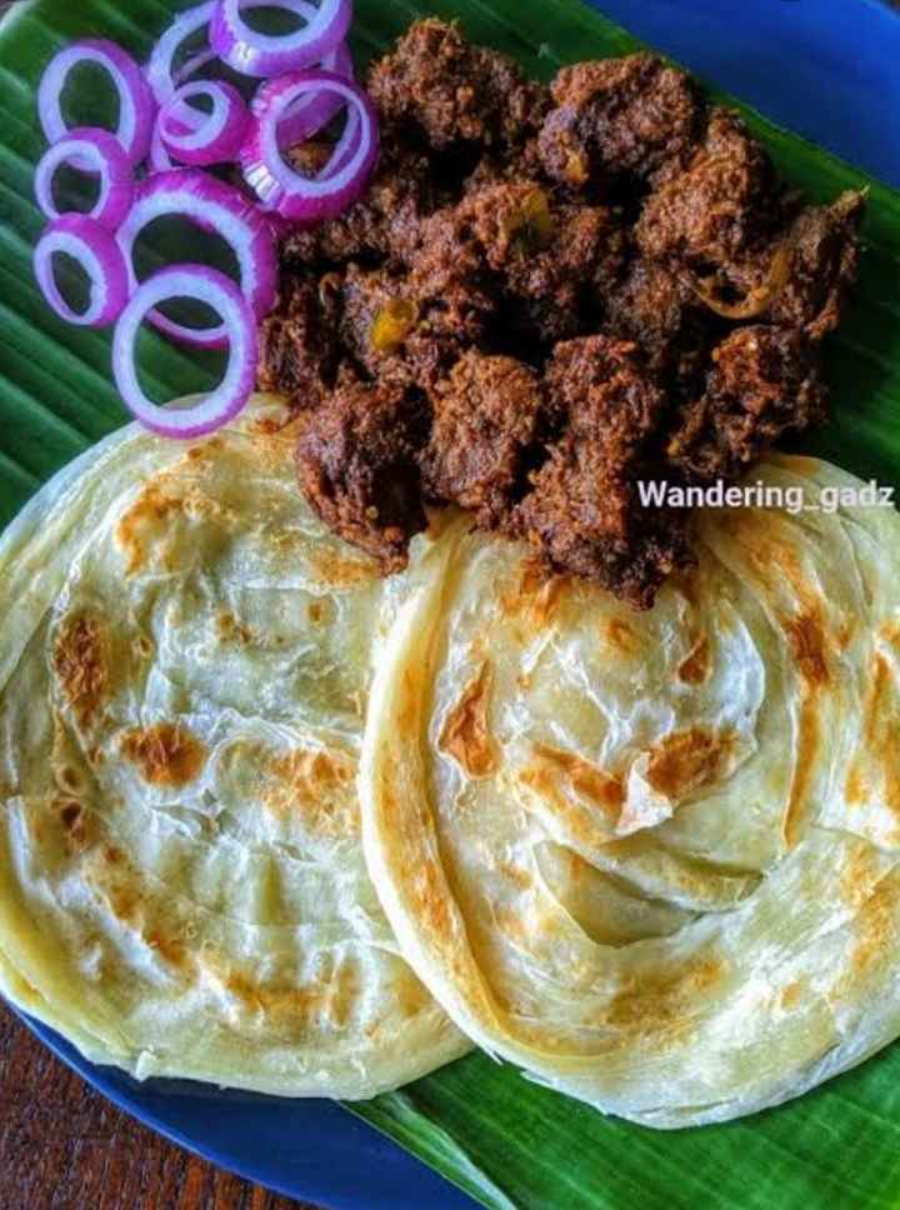


Introduction:
Beef and parotta, a combination beloved by many, represents a fusion of flavors and cultural narratives that is deeply embedded in the culinary traditions of South India. This essay explores the historical context, cultural significance, and culinary techniques involved in preparing and savoring this iconic duo.
🍖Historical Context
The origins of parotta, a flaky, layered flatbread, can be traced back to the southern regions of India, particularly Tamil Nadu and Kerala. Parotta has evolved over centuries, influenced by the diverse culinary practices brought by traders, invaders, and settlers. The influence of Arab and Persian traders introduced the concept of layered bread, which was adapted and transformed into the parotta we know today.
Beef, on the other hand, has a more complex and controversial history in India due to religious and cultural sensitivities. While the consumption of beef is prohibited in Hinduism, it is widely consumed by Muslims, Christians, and certain Hindu communities in Kerala and Tamil Nadu. This dietary divergence highlights the rich tapestry of cultural and religious diversity in the region.
🍖Culinary Techniques
The preparation of parotta is an art form. The dough, made from refined flour (maida), water, oil, and a pinch of salt, is kneaded until it reaches a smooth consistency. It is then allowed to rest, which helps in gluten development, making the dough elastic. The rested dough is divided into small balls, which are flattened, stretched, and folded repeatedly to create thin layers. These layers are coiled into a spiral and rolled out again before being cooked on a hot griddle with a generous amount of oil or ghee. The result is a crispy, flaky bread with a soft interior.
Beef curry, which often accompanies parotta, is prepared with a myriad of spices that are a hallmark of South Indian cuisine. The beef is marinated with spices such as turmeric, chili powder, coriander, and garam masala, then slow-cooked with onions, tomatoes, ginger, garlic, and coconut milk. This slow cooking process ensures that the beef is tender and infused with rich flavors.
🍖 Cultural Significance
The pairing of beef and parotta is more than just a culinary delight; it is a reflection of the cultural mosaic of South India. In Tamil Nadu and Kerala, this dish is a staple in many households and is often enjoyed during festivals, special occasions, and communal gatherings. It transcends social boundaries, bringing together people from various walks of life to share a meal.
In Kerala, the Malabar region is particularly famous for its beef and parotta. The dish is integral to the region's identity, representing the confluence of native culinary practices and external influences. It is also a symbol of resistance and assertion of identity for communities that consume beef despite the socio-political challenges they face.
🍖 Contemporary Relevance
In recent years, beef and parotta have become a subject of political and social discourse in India. The consumption of beef has been a contentious issue, with debates around dietary freedom, religious tolerance, and cultural rights. Despite these controversies, the dish continues to be a beloved comfort food for many, embodying the resilience of cultural practices and the enduring love for good food.
